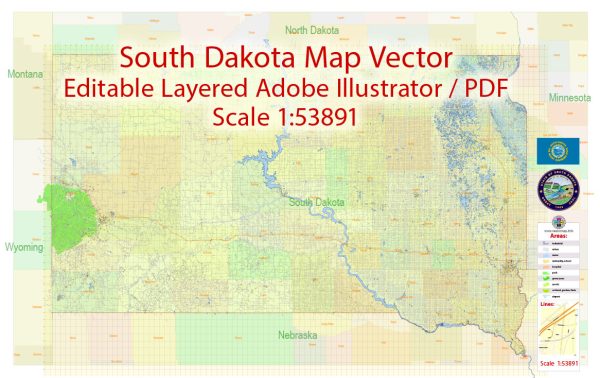South Dakota has a unique history of urban development that reflects its rural character and the challenges faced by a state with a relatively small population. While much of the state is characterized by open landscapes and a strong agricultural tradition, there are key urban centers that have played significant roles in South Dakota’s development.
- Sioux Falls:
- Sioux Falls is the largest city in South Dakota and has been a crucial economic hub. The city originated around the Big Sioux River and was initially a stop for settlers and traders during the late 19th century.
- The city’s growth was fueled by the establishment of industries, including milling and manufacturing, as well as the expansion of transportation networks like railroads.
- Today, Sioux Falls is a dynamic urban center with a diverse economy, including finance, healthcare, and technology.
- Rapid City:
- Rapid City is another important urban center, located in the western part of the state. It has historical significance as a gateway to the Black Hills and played a role in the gold rush of the late 19th century.
- The city’s growth was further stimulated by the establishment of Ellsworth Air Force Base during World War II, bringing military and civilian populations to the area.
- Rapid City has become a regional center for tourism, commerce, and education.
- Aberdeen:
- Aberdeen has a history tied to agriculture and railroads. It served as a major hub for the Milwaukee Railroad, contributing to its growth in the late 19th century.
- The city has maintained its agricultural roots, with a focus on farming, livestock, and related industries. Aberdeen is also a center for education and healthcare in the region.
- Pierre:
- As the state capital, Pierre has a unique role in South Dakota’s urban development. It is situated along the Missouri River and was chosen as the capital in the late 19th century.
- Pierre has grown as an administrative and political center, and state government plays a significant role in its economy. The city also has cultural attractions and outdoor recreational opportunities.
- Brookings:
- Home to South Dakota State University, Brookings has a strong educational influence on the state. The university contributes to the city’s economy and cultural vibrancy.
- The presence of the university has attracted research and technology-related industries, contributing to the city’s development as a center for innovation and education.
- Yankton:
- Yankton has historical significance as the first capital of the Dakota Territory. It played a role in the early territorial government and has maintained a connection to its past through preservation efforts.
- The city is situated along the Missouri River, contributing to its development as a trading and transportation hub.
Throughout South Dakota’s history, the balance between urban and rural development has been crucial. Urban centers have served as economic, cultural, and educational hubs, while the state’s vast rural areas continue to be essential for agriculture and natural resource industries. The development of transportation networks, including railroads and highways, has played a significant role in connecting these urban centers and shaping the overall landscape of South Dakota.


 Author: Kirill Shrayber, Ph.D.
Author: Kirill Shrayber, Ph.D.